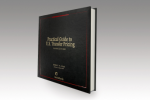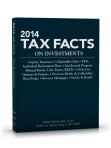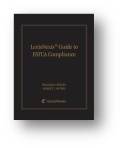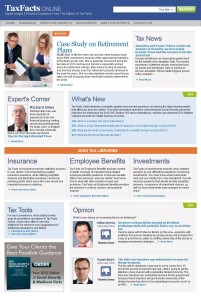Swisspartners Enters into Non Prosecution Agreement and Turns Over US clients account information
The Tax Division of the US Department of Justice (DOJ) and the IRS’ Criminal Investigation (IRS-CI) announced a major victory in their joint campaign “… to identify U.S. tax cheats who have hidden behind phony offshore trusts and foundations,” said Deputy Attorney General Cole in the
Friday, May 9, 2014 release by the DOJ’s Office of Public Affairs.
“This office will continue to work aggressively to hold accountable not only those U.S. taxpayers who evade their tax obligations by hiding money overseas, but also those abroad who make such tax evasion possible,” said U.S. Attorney Bharara.
The asset management firm, Swisspartners, entered into a
non-prosecution agreement (NPA), the terms of which were verified by signature in a May 8, 2014 DOJ letter attached to the
May 9th complaint filed with the New York Southern District. Almost a year ago, the DOJ reported that in July 2013
Liechtensteinische Landesbank AG, a bank based in Vaduz, Liechtenstein that
owns 71% of Swisspartners, entered into a non-prosecution agreement and agreed to pay more than $23.8 million stemming from its offshore banking activities, and turned over more than 200 account files of U.S. taxpayers who held undeclared accounts at the bank.
“I am very pleased that we have successfully concluded negotiations with the Swisspartners Group,” said IRS-CI Chief Weber . “In making amends, the Swisspartners Group has turned over 110 account files relating to U.S. taxpayer-clients who maintained undeclared assets overseas…."
Swisspartners Group confessed to assisting U.S. taxpayer-clients in opening and maintaining undeclared foreign bank accounts from in or about 2001 through in or about 2011. The DOJ provided the following factors as the basis of the
NPA:
- the Swisspartners Group’s voluntary implementation of various remedial measures beginning in or about May 2008;
- the Swisspartners Group’s voluntary self-reporting in 2012 of its criminal conduct at a time when it was neither a subject nor target of any investigation by the U.S. Department of Justice;
- the Swisspartners Group’s voluntary and extraordinary cooperation, including its voluntary production of account files that include the identities of U.S. taxpayer-clients;
- the Swisspartners Group’s willingness to continue to cooperate to the extent permitted by applicable law;
- the Swisspartners Group’s representation, based on an investigation by outside counsel, the results of which have been shared with the U.S. Attorney’s Office and the Tax Division, that the misconduct under investigation did not, and does not, extend beyond that described in the Statement of Facts; and
- the NPA requires the Swisspartners Group to continue to cooperate with the United States for at least three years from the date of the agreement.
The NPA requires the Swisspartners Group to forfeit $3.5 million to the United States, representing certain fees that it earned by assisting its U.S. taxpayer-clients in opening and maintaining these undeclared accounts, and to pay $900,000 in restitution to the IRS, representing the approximate amount of unpaid taxes arising from the tax evasion by the Swisspartners Group’s U.S. taxpayer-clients from 2001 to 2011. In the complaint, Swisspartners admitted to:
- establishing sham corporate entities whereby the clients continued to maintain control of accounts,
- smuggling cash, in the tens of thousands, without reporting into the US to deliver to its clients, and
- establishing sham insurance policies with premiums from undeclared sources and in which the clients continued to control the underlying investments.
On its website,
Swisspartners states: "
swisspartners analyzes your tax and fiscal law situation and provides structuring services at an international level – complementary to the services provided by your tax advisor in your home country." Regarding insurance policies, its website states: "swisspartners designs private-placement insurance contracts that take into account the legal and tax requirements of the countries in which the family members involved have their fiscal domiciles. Not only are our efficiently designed contracts not subject to ongoing taxation in the asset owner’s country of residence, they are also non-taxable in several other countries."
In the DOJ release statements, Deputy Attorney General Cole stated, “Swisspartners avoided criminal charges as a direct result of its decision to self-report its misconduct at a time when it was not even under investigation and its extraordinary cooperation, including its decision to turn over voluntarily the files and identities of U.S. taxpayer clients it helped hide money from the IRS. The case serves as a clear example of the benefits that can be obtained from early and complete cooperation with federal law enforcement.”
David Voreacos of Bloomberg News reported that Kathryn Keneally, assistant attorney general of the Justice Department’s Tax Division, in her keynote remarks to the American Bar Association Section of Taxation mid-year (January 25, 2014), stated that
106 Swiss banks (of approximately 300 total) filed the requisite letter of intent to join the
Program for Non-Prosecution Agreements or Non-Target Letters (the “
Program“) by the December 31, 2013 deadline. Renown attorney and Professor
Jack Townsend reported on his
blog on April 30, 2014 a list of 52 Swiss banks that had publicly announced the intention to submit the letter of intent, as well as each bank’s category for entry: six announced seeking category 4 status, eight for category 3, thirty-eight for category 2.
However, while 106 may be a large jump from a mid-December
report by the international service of the Swiss Broadcasting Corporation (“SwissInfo”) that only a few Swiss banks had filed for non prosecution with the DOJ’s program,
William R. Davis and
Lee A. Sheppard of
Tax Analysts’ Worldwide Tax Daily reported that “one private practitioner estimated that some 350 banks holding 40,000 accounts have not come in.”
(see “ABA Meeting: Keneally Reports Success With Swiss Bank Program”, Jan. 28, 2014, 2014 WTD 18-3.)
Framework of Swiss Bank NPA Program
The DOJ statement described the framework of the Program for Non-Prosecution Agreements: every Swiss bank not currently under formal criminal investigation concerning offshore activities will be able to provide the cooperation necessary to resolve potential criminal matters with the DOJ. Currently, the department is actively investigating the Swiss-based activities of 14 banks. Those banks, referred to as Category 1 banks in the Program, are expressly excluded from the Program. Category 1 Banks against which the DOJ has initiated a criminal investigation as of 29 August 2013 (date of program publication).
To be eligible for a non-prosecution agreement, Category 2 banks must meet several requirements, which include agreeing to pay penalties based on the amount held in undeclared U.S. accounts, fully disclosing their cross-border activities, and providing detailed information on an account-by-account basis for accounts in which U.S. taxpayers have a direct or indirect interest. Providing detailed information regarding other banks that transferred funds into secret accounts or that accepted funds when secret accounts were closed is also a stipulation for eligibility. The Swiss Federal Department of Finance has released a >
model order and guidance note < that will allow Swiss banks to cooperate with the DOJ and fulfill the requirements of the Program.
The DOJ’s November 2013 comments responded to such issues as: (a) Bank-specific issues and issues concerning individuals, (b) Choosing which category among 2, 3, or 4, (c) Qualifications of independent examiner (attorney or accountant), (d) Content of independent examiner report, (e) Information required under the Program – no aggregate account data, (f) Penalty calculation – permitted reductions, (g) Category 4 banks – retroactive application of FATCA Annex II, paragraph II.A.1, and (h) Civil penalties.
Which of Four Categories To File for Non-Prosecution Under?
Regarding which category to file under, the DOJ replied: “Each eligible Swiss bank should carefully analyze whether it is a category 2, 3 or 4 bank. While it may appear more desirable for a bank to attempt to position itself as a category 3 or 4 bank to receive a non-target letter, no non-target letter will be issued to any bank as to which the Department has information of criminal culpability. If the Department learns of criminal conduct by the bank after a non-target letter has been issued, the bank is not protected from prosecution for that conduct. If the bank has hidden or misrepresented its activities to obtain a non-target letter, it is exposed to increased criminal liability.”
SwissInfo
reported that Migros Bank selected Program Category 2 because “370 of its 825,000 clients, mostly Swiss citizens residing temporarily in the US or clients with dual nationality”, met the criteria of US taxpayer. Valiant told SwissInfo that “an internal review showed it had never actively sought US clients or visited Americans to drum up business. The bank said less than 0.1% of its clients were American.”
Category 2
Banks against which the DoJ has not initiated a criminal investigation but have reasons to believe that that they have violated US tax law in their dealings with clients are subject to fines of on a flat-rate basis. Set scale of fine rates (%) applied to the untaxed US assets of the bank in question:
- Existing accounts on 01.08.2008: 20%
- New accounts opened between 01.08.2008 and 28.02.2009: 30%
- New accounts after 28.02.2009: 50%
Category 2 banks must delivery of information on cross-border business with US clients, name and function of the employees and third parties concerned, anonymised data on terminated client relationships including statistics as to where the accounts re-domiciled.
Category 3
Banks have no reason to believe that they have violated US tax law in their dealings with clients and that can have this demonstrated by an independent third party. A category 3 bank must provide to the IRS the data on its total US assets under management and confirmation of an effective compliance program in force.
Category 4
Banks are a local business in accordance with the FATCA definition.
Independence of Qualified Attorney or Accountant Examiner
Regarding the requirement of the independence of the qualified attorney or accountant examiner, the DOJ stated that the examiner “is not an advocate, agent, or attorney for the bank, nor is he or she an advocate or agent for the government. He or she must provide a neutral, dispassionate analysis of the bank’s activities. Communications with the independent examiner should not be considered confidential or protected by any privilege or immunity.” The attorney / accountant’s report must be substantive, detailed, and address the requirements set out in the DOJ’s non-prosecution Program. The DOJ stated that “Banks are required to cooperate fully and “come clean” to obtain the protection that is offered under the Program.”
In the ‘bottom line’ words of the DOJ: “Each eligible Swiss bank should carefully weigh the benefits of coming forward, and the risks of not taking this opportunity to be fully forthcoming. A bank that has engaged in or facilitated U.S. tax-related or monetary transaction crimes has a unique opportunity to resolve its criminal liability under the Program. Those that have criminal exposure but fail to come forward or participate but are not fully forthcoming do so at considerable risk.”
If you are interested in discussing the Master or Doctoral degree in the areas of international taxation, please contact me: profbyrnes@gmail.com to Google Hangout or Skype that I may take you on an “online tour”

 2014 Tax Facts on Investments
2014 Tax Facts on Investments 



